Nestled amidst the majestic Himalayas and the lush jungles of the Terai, Nepal is a land brimming with an array of breathtaking landscapes, ancient temples, and vibrant cultures. This small yet diverse country offers a unique blend of natural beauty and spiritual richness, making it a dream destination for travelers and adventurers alike. From the awe-inspiring Everest Base Camp to the sacred precincts of the Pashupatinath Temple, Nepal's attractions are as varied as they are numerous. Whether it's the tranquil beauty of Phewa Lake, the historical grandeur of Durbar Squares, or the exotic wildlife of Chitwan National Park, each site provides a unique window into the heart and soul of this enchanting country. Luxury Holidays Nepal Pvt. Ltd. invites you to explore these must-see attractions, promising an experience that blends thrilling adventure with profound cultural insights. As you journey through Nepal, from the rugged trails of the Langtang Region to the serene ambiance of Lumbini Peace Park, you'll discover why this Himalayan nation is a treasure trove of unforgettable experiences.
We pride ourselves on being the premier choice for exploring the must-see attractions of Nepal. Our deep-rooted expertise in crafting bespoke travel experiences ensures that every journey with us is not just a trip, but a passage into the heart of Nepal's majestic landscapes and rich cultural heritage. We understand the allure of Nepal's diverse attractions - from the soaring peaks of the Himalayas to the sacred temples and bustling city squares. Our team of experienced guides and travel experts is dedicated to providing personalized services, ensuring that each itinerary is tailored to fit the unique interests and preferences of our clients. Whether it's embarking on a thrilling trek to Everest Base Camp, exploring the historical wonders of the Durbar Squares, or finding tranquility beside the serene Phewa Lake, we at Luxury Holidays Nepal are committed to making your visit to these iconic destinations a memorable and enriching experience. With us, you're not just visiting Nepal; you're immersing yourself in a world of adventure, spirituality, and unparalleled natural beauty.
Diverse Landscapes
Nepal, a country often synonymous with the towering Himalayas, offers a breathtaking array of diverse landscapes, each with its unique charm and allure. Here's a closer look at these diverse landscapes, making Nepal a must-visit destination for nature lovers and adventurers alike:
-
The Majestic Himalayas: Home to eight of the world's ten highest peaks, including the renowned Mount Everest, the Himalayan range in Nepal is a magnet for trekkers and mountaineers. This region offers not only challenging treks, like the journey to Everest Base Camp, but also stunning vistas of snow-capped mountains, glacial lakes, and unique flora and fauna.
-
The High Altitude Plateaus and Valleys: Regions like the Langtang Valley and the Annapurna Circuit offer a mix of high-altitude plateaus, lush valleys, and terraced farms. These areas are not only a trekker’s paradise but also a place to experience the rich cultural tapestry of the Nepalese mountain communities.
-
The Lush Middle Hills: Between the high Himalayas and the lowland plains lie Nepal's middle hills, a region of rolling green hills, quaint villages, and terraced farming landscapes. This area provides a serene and picturesque setting, ideal for moderate treks, cultural tours, and experiencing rural Nepalese life.
-
The Terai Lowlands: The southern part of Nepal, known as the Terai region, is characterized by dense forests, savannahs, and wetlands. This area houses the famous Chitwan National Park and Bardia National Park, where visitors can experience jungle safaris and witness a variety of wildlife including tigers, rhinos, and elephants.
-
Rivers and Waterfalls: Nepal’s diverse topography gives rise to numerous rivers, cascading waterfalls, and serene lakes. The Trishuli, Bhote Koshi, and Seti Rivers are popular for white-water rafting, while Phewa Lake in Pokhara is known for its tranquil beauty and reflection of the Annapurna range.
-
Urban Landscapes: Amidst Nepal’s natural splendor, the urban landscapes of cities like Kathmandu, Patan, and Bhaktapur offer a different kind of diversity. These cities are rich in cultural heritage, with ancient temples, palaces, and squares that juxtapose with the bustling modern life.
Each of these landscapes in Nepal not only offers a visual feast but also an opportunity to engage in various activities, from trekking and mountaineering in the Himalayas to wildlife safaris in the Terai, and cultural explorations in the middle hills and urban centers. The diverse landscapes of Nepal are a testament to the country’s geographical and ecological richness, making it a destination that appeals to all kinds of travelers.
Spiritual Significance
Nepal, often referred to as the land of gods and goddesses, is a spiritual sanctuary with a plethora of sites holding deep religious and spiritual significance. These sacred places are not just tourist attractions but are vital to the spiritual fabric of the country and offer profound experiences to visitors:
- Boudhanath Stupa: One of the largest stupas in the world, the Boudhanath Stupa in Kathmandu is a significant center of Tibetan Buddhism. This massive white dome surrounded by a ring of colorful prayer flags and prayer wheels radiates a strong sense of peace and spirituality.
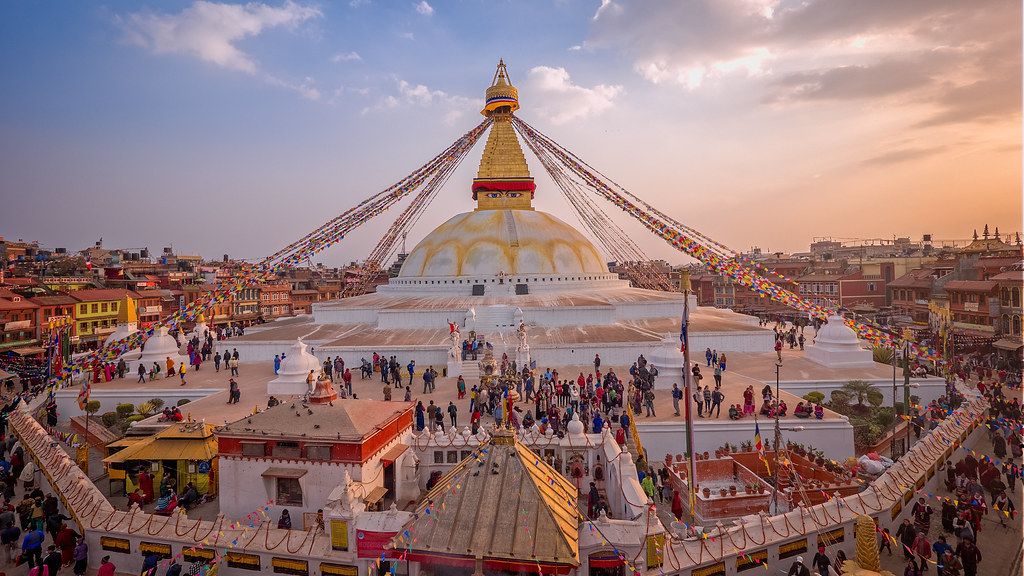
- Pashupatinath Temple: This sacred Hindu shrine located on the banks of the Bagmati River in Kathmandu is one of the most important temples dedicated to Lord Shiva in the world. The Pashupatinath Temple complex is a sprawling collection of temples, ashrams, images, and inscriptions raised over centuries along the banks of the sacred river.
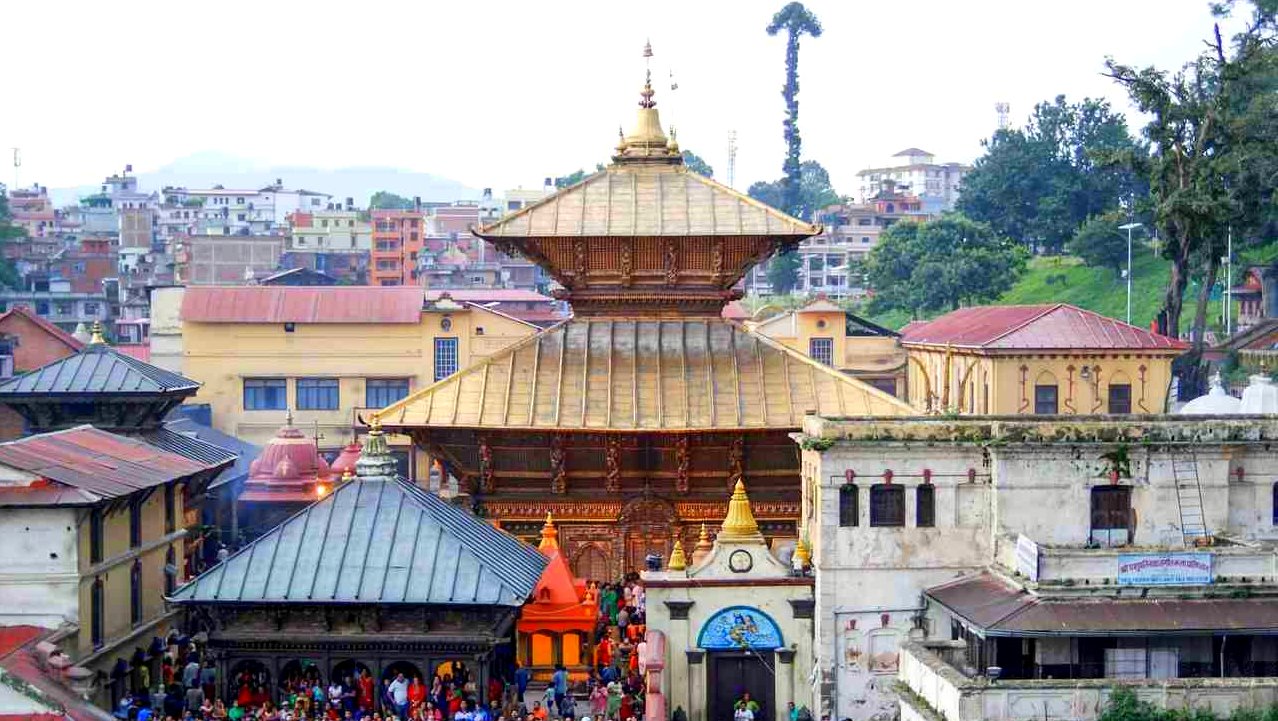
- Swayambhunath (Monkey Temple): Known for its iconic stupa and resident monkeys, Swayambhunath is another prime example of Nepal’s spiritual heritage. Perched atop a hill, it offers panoramic views of Kathmandu, while the stupa itself is a symbol of enlightenment.
.jpg)
- Kathmandu Durbar Square: Located in the heart of Kathmandu, this square is a stunning display of medieval architecture. It houses the old Royal Palace, known as Hanuman Dhoka, a name derived from the statue of Hanuman (the monkey god) at the entrance. The square is also home to various temples and shrines, such as the Taleju Temple and Kumari Ghar, the residence of the Living Goddess, Kumari.
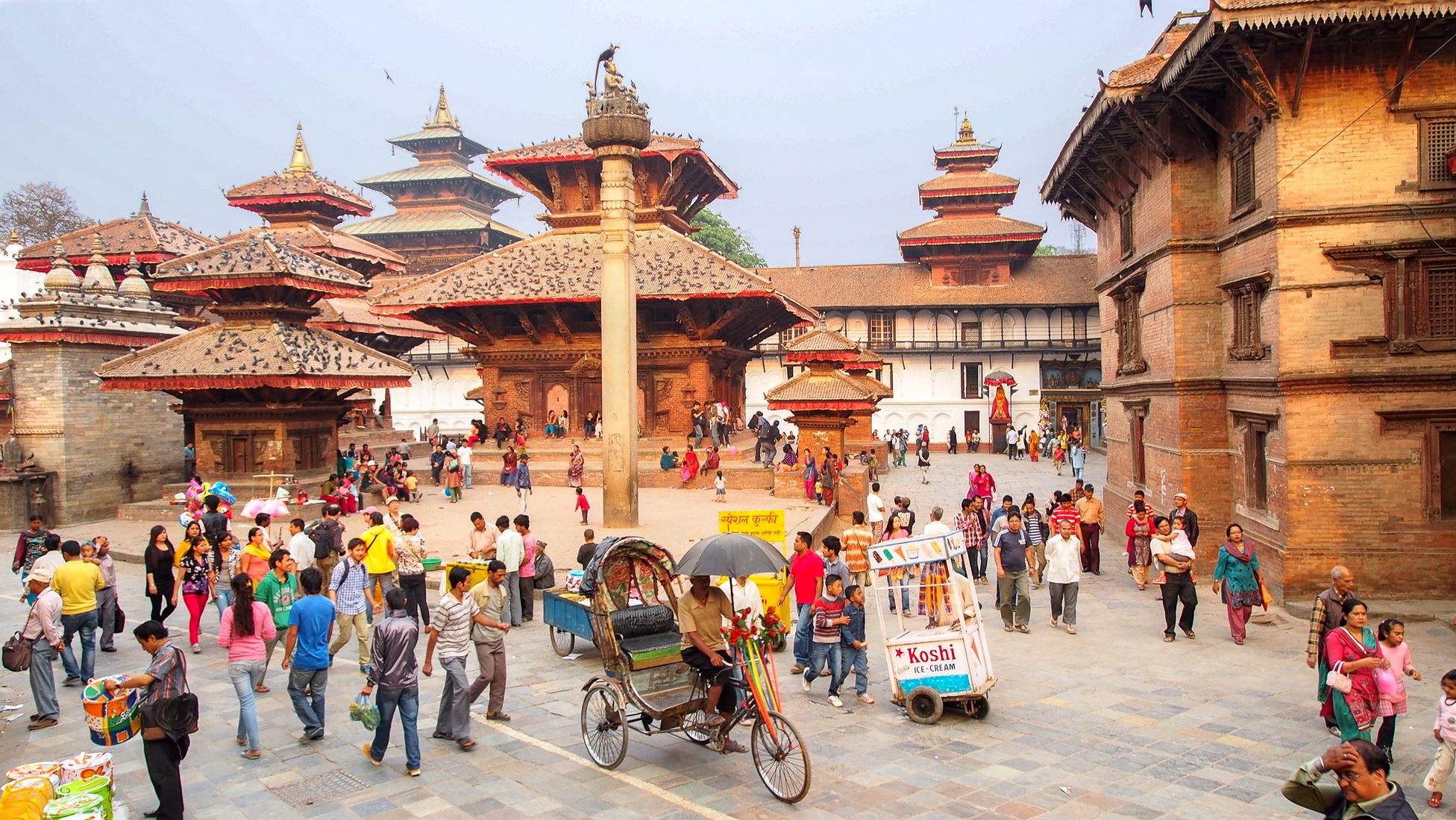
- Patan Durbar Square: Situated in Lalitpur, Patan Durbar Square is famed for its artistic beauty. It is surrounded by ancient structures intricately carved with Hindu and Buddhist motifs. The square features the Patan Museum, which houses a collection of traditional Nepali and Tibetan art. The Krishna Mandir, with its fine stone carvings, is another highlight of this square.
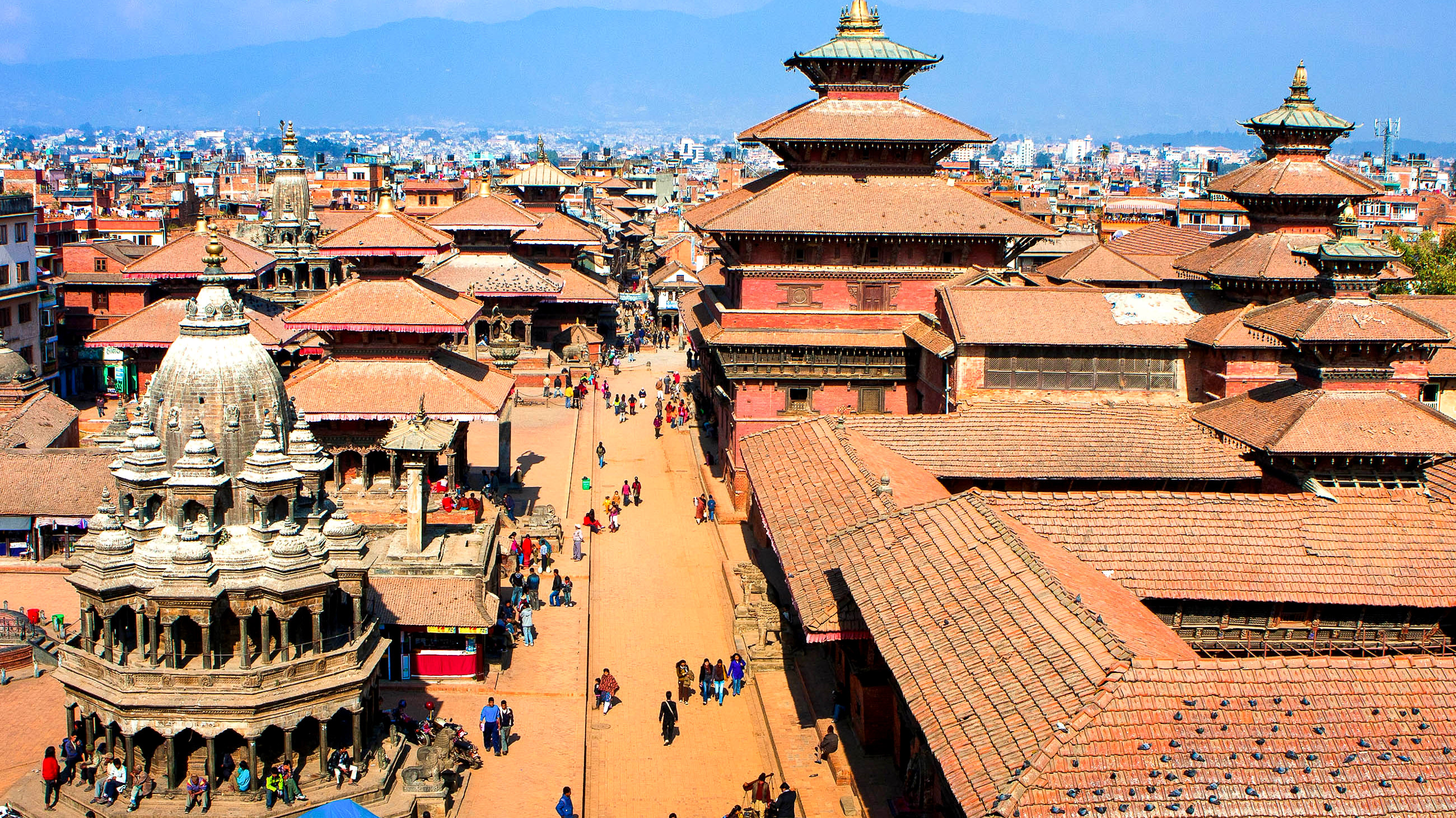
- Bhaktapur Durbar Square: Bhaktapur, also known as the 'City of Devotees', hosts its Durbar Square, which is a world in itself. This square is known for its majestic architectural structures, including the 55 Window Palace, Golden Gate, and the Lion's Gate. The Nyatapola Temple, standing five stories tall, is one of the tallest pagoda-style temples in Nepal and is a significant attraction here.
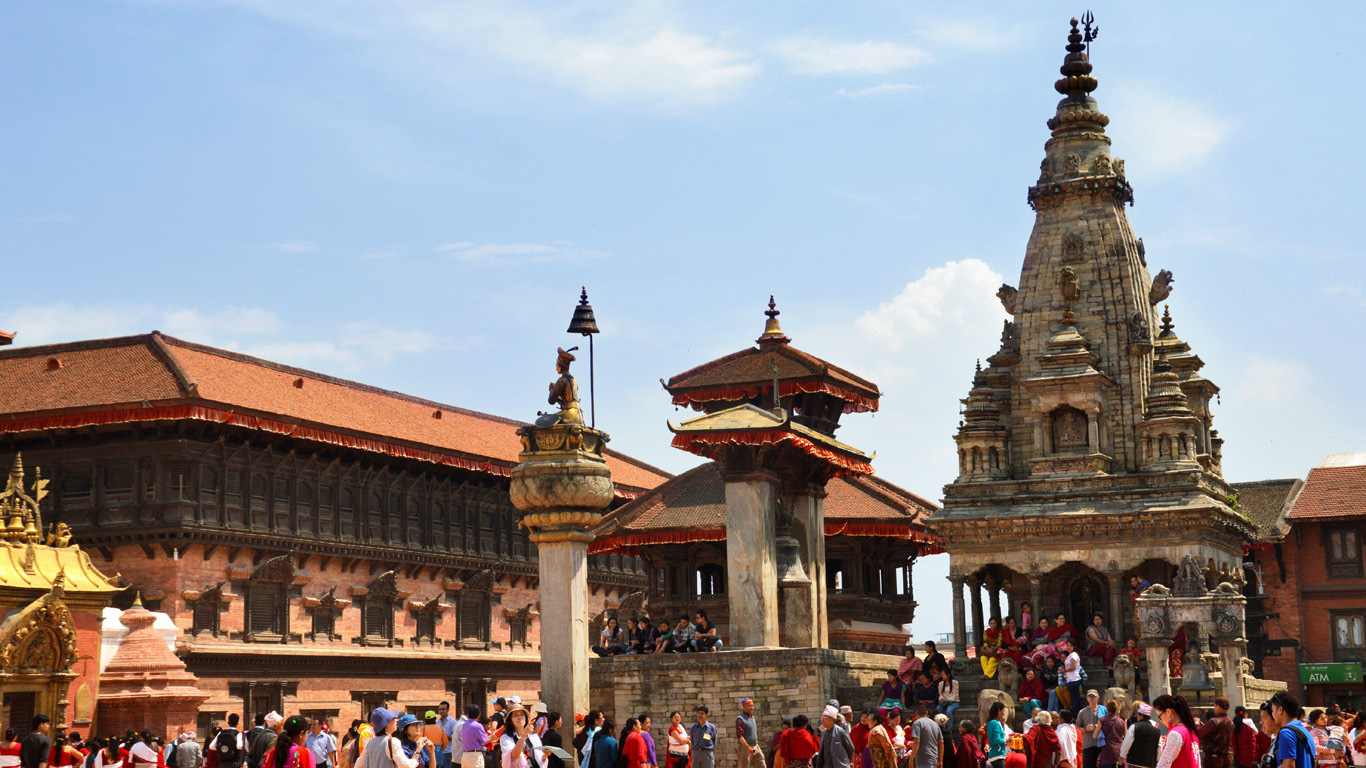
- Lumbini: Recognized as the birthplace of Siddhartha Gautama, the Lord Buddha, Lumbini is one of the most sacred places in the Buddhist tradition. The site, particularly the Lumbini Peace Park, is dotted with temples, monasteries, and a sacred Bodhi tree, making it a place of pilgrimage and reflection.
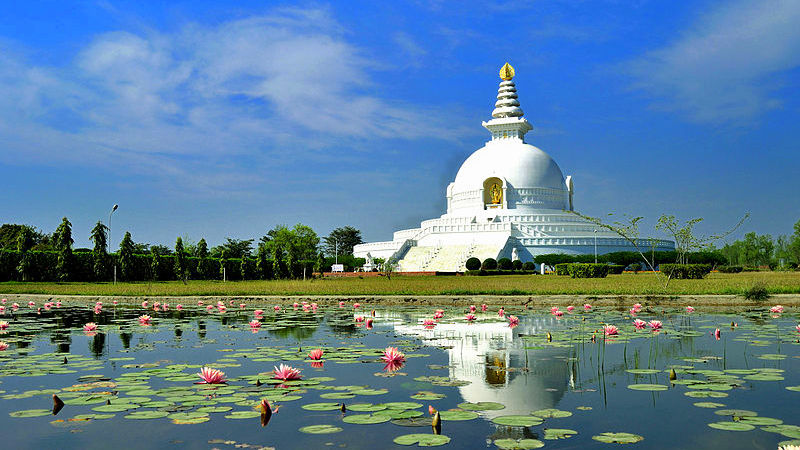
These spiritual sites in Nepal are not just places of worship; they are deeply intertwined with the country’s history, culture, and daily life. Visiting these sites offers a unique insight into the spiritual practices and beliefs of the Nepalese people, making them an essential part of the must-see attractions in Nepal.
Adventure and Trekking
Nepal is a paradise for adventure enthusiasts and trekkers, offering some of the most exhilarating and diverse trekking experiences in the world. The country's rugged terrain, soaring peaks, and scenic trails make it an ultimate destination for those seeking adventure and a connection with nature. Here are the highlights of adventure and trekking in Nepal:
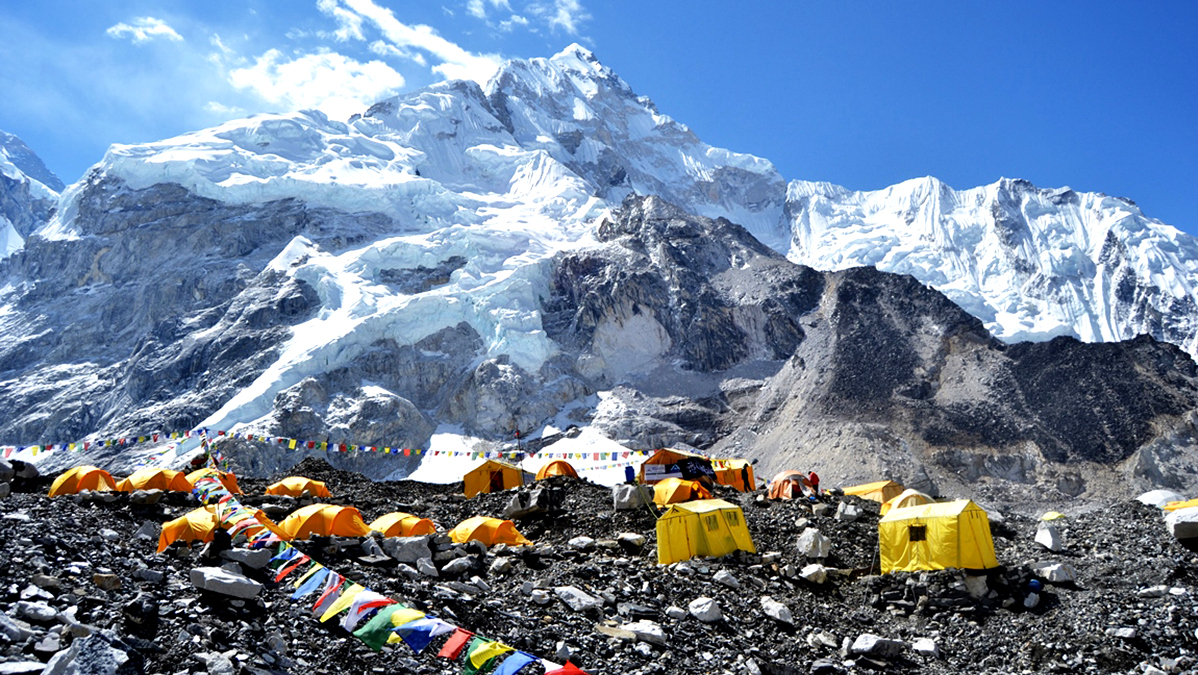
-
Everest Base Camp Trek: The journey to Everest Base Camp is perhaps the most iconic trek in Nepal. This trek offers a challenging yet rewarding experience, with breathtaking views of the world's highest mountain, Everest, and its surrounding peaks. The trek also provides an opportunity to experience Sherpa culture and visit ancient monasteries.
-
[block](2)
-
Annapurna Circuit Trek: The Annapurna Circuit is renowned for its diverse scenery, ranging from subtropical forests and terraced rice paddies to alpine meadows and high mountain landscapes. This trek circles the Annapurna massif, providing stunning views of Annapurna, Dhaulagiri, and Machhapuchhre peaks.
-
[block](107)
-
Langtang Valley Trek: The Langtang Valley Trek is a relatively less crowded but equally mesmerizing trekking option. It takes trekkers through lush forests, high alpine meadows, and traditional Tamang villages, with stunning views of the Langtang and Ganesh Himal ranges.
-
[block](4)
-
Manaslu Circuit Trek: Offering a more remote and off-the-beaten-path experience, the Manaslu Circuit Trek revolves around the eighth-highest mountain in the world, Mount Manaslu. This trek is known for its cultural diversity and stunning landscapes, including high mountain passes and deep river gorges.
-
[block](5)
-
Upper Mustang Trek: The Upper Mustang Trek leads to the former Kingdom of Lo, a region with a landscape and culture more similar to Tibet than Nepal. This trek offers a unique opportunity to explore ancient monasteries, caves, and a desert-like, rocky terrain.
-
[block](86)
-
Ghorepani Poon Hill Trek: Ideal for those looking for a shorter trek, the Ghorepani Poon Hill Trek is famous for its panoramic sunrise views over the Himalayas from Poon Hill. This trek also offers a glimpse into the culture of the Gurung and Magar communities.
-
[block](25)
-
Adventure Sports: Beyond trekking, Nepal is a hub for adventure sports. White-water rafting on the Trishuli and Bhote Koshi rivers, paragliding in Pokhara, bungee jumping near the Tibetan border, and mountain biking in the hills around Kathmandu are popular activities for thrill-seekers.
-
[block](46)
-
Expeditions and Peak Climbing: For the more experienced adventurers, Nepal offers mountaineering expeditions to some of the highest peaks in the world. Climbing peaks like Island Peak, Mera Peak, and Lobuche East provide a challenging and rewarding experience for seasoned climbers.
Nepal's diverse terrain not only provides the backdrop for these incredible trekking and adventure experiences but also offers an opportunity to engage with the country's rich cultural heritage and witness the daily lives of its people in remote areas. Adventure and trekking in Nepal are not just physical challenges but journeys that leave lasting impressions on the heart and soul.
Wildlife and Conservation
Nepal's rich biodiversity and commitment to conservation make it a haven for wildlife enthusiasts. The country's varied landscapes, ranging from the high Himalayas to the lush Terai plains, are home to an array of unique and exotic wildlife species. Here are the key highlights of wildlife and conservation in Nepal:

-
Chitwan National Park: As Nepal's first national park and a UNESCO World Heritage Site, Chitwan National Park is a flagship for conservation in Nepal. This park is renowned for its success in conserving the one-horned rhinoceros and Bengal tiger. Visitors can embark on jungle safaris to spot these majestic creatures, as well as leopards, sloth bears, and a variety of deer species.
-
[block](39)
-
Bardia National Park: Less frequented but equally fascinating, Bardia National Park offers a more untouched and authentic wildlife experience. This park is also known for its tiger sightings and is home to other species like elephants, rhinoceros, and Gangetic dolphins, making it a critical area for wildlife conservation.
-
[block](48)
-
Koshi Tappu Wildlife Reserve: Famous for bird watching, Koshi Tappu Wildlife Reserve hosts a remarkable variety of birdlife, including rare species such as the Bengal florican. The reserve, located in the eastern Terai region, is a vital habitat for migratory birds and supports a significant population of water buffalo.
-
Langtang National Park: Situated in the central Himalayan region, Langtang National Park is notable for its diverse topography and wildlife. The park is home to species adapted to high altitude, including the elusive snow leopard, red panda, and Himalayan tahr.
-
Sagarmatha National Park: Located around the Everest region, Sagarmatha National Park is not only famous for its breathtaking landscapes but also for its unique high-altitude wildlife. Species such as the snow leopard, Himalayan black bear, and several species of pheasants can be found here.
-
Annapurna Conservation Area: The largest protected area in Nepal, the Annapurna Conservation Area, encompasses various ecosystems and is home to diverse wildlife, including the snow leopard, blue sheep, and many bird species. This area is a prime example of community-based conservation efforts.
-
Conservation Efforts and Community Involvement: Nepal's success in wildlife conservation is largely due to community involvement. Many conservation areas and national parks work closely with local communities for sustainable tourism and conservation initiatives, blending ecological preservation with socio-economic development.
-
Wildlife Tours and Safari Experiences: Wildlife tours in Nepal offer more than just animal sightings; they provide an immersive experience of the country's natural heritage. Jungle safaris, bird-watching tours, and guided walks are conducted with a deep respect for the natural environment and the wildlife that inhabits it.
Nepal's wildlife and conservation efforts reflect the country's commitment to preserving its natural heritage. Visiting these protected areas not only offers a chance to witness some of the rarest wildlife on the planet but also supports the crucial conservation work being done in these regions.
Cultural Diversity
Nepal's cultural diversity is a vibrant tapestry of traditions, languages, rituals, and lifestyles, reflecting the rich mosaic of its numerous ethnic groups and communities. This diversity is celebrated in its festivals, architecture, cuisine, and daily practices, making Nepal a fascinating destination for those interested in cultural exploration. Here are the key aspects of Nepal's cultural diversity:
-
Ethnic Diversity and Traditions: Nepal is home to over 120 distinct ethnic groups, each with its own unique customs, languages, and traditions. The Sherpa communities in the Himalayas, the Newars in the Kathmandu Valley, the Tharu people in the Terai region, and many others contribute to the country's rich cultural fabric.
-
Festivals and Celebrations: Nepal’s calendar is dotted with festivals celebrated by different communities. Major festivals like Dashain and Tihar are celebrated nationwide, whereas others like Indra Jatra and Teej are specific to certain ethnic groups. These festivals, with their rituals, music, and dances, offer a glimpse into the heart of Nepal's cultural practices.
-
Architectural Heritage: The architecture of Nepal is deeply influenced by its cultural diversity. The pagoda style, which is prominent in Nepalese temples, the stupas like Boudhanath, and the intricately carved wooden windows in traditional Newari houses, all reflect the country's rich architectural heritage.
-
Languages and Literature: With over 120 languages spoken across the country, Nepal's linguistic landscape is as diverse as its people. This linguistic richness is mirrored in the country's literature, folk tales, and songs, which vary significantly from one region to another.
-
Culinary Diversity: Nepalese cuisine is a delightful amalgamation of flavors influenced by its diverse ethnic groups and neighboring countries. Dishes like Dal Bhat (rice and lentils), Momos (dumplings), and Newari cuisine reflect the variety and richness of Nepal's culinary traditions.
-
Religious Practices: Nepal is a secular country where Hinduism and Buddhism are the main religions, but it also houses a variety of other faiths like Islam, Christianity, and indigenous practices. This religious diversity is evident in the numerous temples, monasteries, and shrines scattered across the country.
-
Traditional Arts and Crafts: The diverse cultural heritage of Nepal is also reflected in its arts and crafts. Traditional crafts like Thangka painting, pottery, and metalwork not only represent the artistic skills of the Nepalese people but also their cultural and religious beliefs.
-
Dance and Music: Traditional Nepali music and dance vary significantly from one ethnic group to another. Each group has its own distinct musical instruments and dance styles, often performed during festivals and important life events.
Nepal's cultural diversity is not just an aspect of its past but a living, evolving part of its present. Visitors to Nepal have the opportunity to immerse themselves in this diversity, gaining a deeper understanding and appreciation of the different cultures that coexist in this fascinating country.
Local Cuisine and Hospitality
Nepal's local cuisine and hospitality are integral parts of the country's cultural charm, offering visitors a warm and authentic experience. The diversity in Nepal's culinary traditions mirrors its cultural and geographical variety, while the hospitality of its people is renowned for its sincerity and warmth. Here are key highlights of Nepal's local cuisine and hospitality:
-
Diverse Culinary Palette: Nepalese cuisine is a delightful mix of flavors influenced by its ethnic diversity and neighboring countries, India and Tibet. The staple dish, Dal Bhat (lentil soup, rice, and vegetable curry), is a must-try. It's nutritious, and flavorful, and varies from region to region.
-
Momos - A Culinary Staple: No discussion of Nepalese cuisine is complete without mentioning Momos, delicious dumplings filled with meat or vegetables. They are a beloved snack across Nepal, often served with a spicy tomato-based dipping sauce.
-
Newari Cuisine: The Newar community, indigenous to the Kathmandu Valley, has a distinctive cuisine that is a highlight for food enthusiasts. Dishes like Bara (lentil pancakes), Yomari (sweet dumplings), and various meat and vegetable dishes offer a unique taste of local flavors.
-
Thakali Cuisine: Originating from the Thak Khola region of Mustang, Thakali cuisine is a balanced mix of Tibetan and Nepalese cooking styles. The Thakali set meal, similar to Dal Bhat but with distinct flavors and ingredients, is particularly popular.
-
Street Food and Local Delicacies: Nepalese street food offers a variety of quick and tasty options. From Sekuwa (barbecued meat) to Chatamari (rice crepe), the streets of Nepal's cities and towns are a paradise for food lovers.
-
Tea and Beverages: Tea, particularly the spiced milk tea called Chiya, is a staple beverage in Nepal. The local rice beer, known as Raksi or Chhaang, is also popular, especially in hilly and mountainous regions.
-
Warm Hospitality: Nepalese people are known for their warm and welcoming nature. Guests are often treated as gods ("Atithi Devo Bhava"), and this ethos is deeply ingrained in Nepalese hospitality. Whether in a city hotel or a mountain teahouse, visitors are greeted with genuine warmth and care.
-
Homestays and Local Experiences: For an authentic experience of Nepalese hospitality, homestays are a great option. They provide an opportunity to live with a local family, share meals, and learn about Nepalese culture and lifestyle firsthand.
The experience of Nepal's local cuisine and hospitality not only satiates the palate but also offers a deep insight into the country's cultural fabric. It's a journey through diverse tastes and warm interactions, adding a delightful and enriching layer to the travel experience in Nepal.
Art and Craftsmanship
Nepal is a treasure trove of art and craftsmanship, reflecting centuries of history, culture, and religious beliefs. The country's artisans are renowned for their skills in creating intricate and meaningful works of art, often passed down through generations. Here's an overview of Nepal's art and craftsmanship, which are integral to its identity and allure:
-
Thangka Paintings: These traditional Tibetan Buddhist paintings on cotton or silk are one of Nepal's most famous art forms. Thangkas, rich in symbolism and meticulously detailed, depict various Buddhist deities, scenes, or mandalas, serving both as objects of worship and meditation aids.
-
Wood Carvings: Woodwork is a prominent feature in Nepalese architecture, seen in temples, palaces, and homes. The intricate carvings often depict gods, goddesses, and mythical creatures and are notable for their detail and craftsmanship. The Newar community, in particular, is renowned for its exceptional wood carving skills.
-
Metal Crafts: Nepalese artisans are skilled in metalworking, creating beautiful statues of deities, ritual objects, and utensils. These items, crafted using the lost-wax casting technique, are significant in both Hinduism and Buddhism. The Patan area in the Kathmandu Valley is especially famous for its exquisite metal crafts.
-
Pottery: Pottery is an ancient craft in Nepal, with the Kathmandu Valley being a historic center. The traditional pottery-making techniques are still practiced in areas like Bhaktapur, where visitors can see potters at their wheels crafting various earthenware.
-
Textile Weaving and Embroidery: Nepal's diverse ethnic groups have their unique textile weaving and embroidery techniques. The Rai, Limbu, and Gurung communities, for instance, are known for their colorful and intricate hand-woven fabrics.
-
Jewelry: Traditional Nepalese jewelry is not just ornamental but often holds cultural and religious significance. Artisans create exquisite pieces using precious metals and stones, incorporating symbols and designs that reflect the country’s cultural heritage.
-
Paper Making: The traditional Nepalese paper, known as Lokta Paper, is handmade from the bark of the Daphne plant. It is durable and resistant to insects, often used for writing, printing, and painting.
-
Stone Carving: Stone carving is another traditional craft in Nepal, with historical examples seen in various temples and stupas across the country. Artisans skillfully carve religious figures and intricate designs, continuing a legacy that dates back centuries.
Nepal's art and craftsmanship are not just about the creation of beautiful objects; they are deeply imbued with cultural, religious, and historical significance. For visitors, exploring these arts offers a window into the soul of Nepal, revealing stories and traditions that are an integral part of the nation's identity.
Nepal is a mosaic of breathtaking landscapes, rich cultural heritage, deep spiritual significance, thrilling adventure and trekking opportunities, diverse wildlife and conservation efforts, vibrant cultural diversity, delicious local cuisine and warm hospitality, and exquisite art and craftsmanship. These facets come together to create a destination that is not just a place to visit, but a world to experience. Whether it's the majestic peaks of the Himalayas, the spiritual serenity of Lumbini, the adventure trails of the Annapurna Circuit, or the intricate artistry of Thangka paintings, Nepal offers something for every traveler. Each attraction in Nepal is a chapter in a larger story of a nation that’s steeped in history, spirituality, and natural beauty. A journey through Nepal is a journey through a land of wonder, a place where each visit leaves an indelible mark on the heart and soul.
FAQs: Must-see Attractions in Nepal
Q: What is the best time to visit Nepal?
A: The best time to visit Nepal is during the autumn months (October to November) and spring (March to April). During these times, the weather is pleasant, and the skies are clear, offering excellent conditions for trekking and sightseeing.
Q: Do I need a visa to travel to Nepal?
A: Most foreign nationals require a visa to enter Nepal. Visas can be obtained on arrival at Tribhuvan International Airport in Kathmandu and at certain land borders. However, it's advisable to check the latest visa requirements before traveling.
Q: Is trekking in Nepal suitable for beginners?
A: Yes, Nepal offers a range of trekking options suitable for all levels, including beginners. Treks like the Ghorepani Poon Hill Trek are ideal for those new to trekking, while more challenging options are available for experienced trekkers.
Q: What are the main cultural etiquettes to be aware of in Nepal?
A: In Nepal, it's important to show respect to local customs. This includes removing shoes before entering temples and homes, not touching people's heads, and using your right hand to eat and give or receive items.
Q: Can I see Mount Everest without doing a trek?
A: Yes, you can see Mount Everest without a full trek. Options include taking a scenic mountain flight from Kathmandu or a shorter trek to places like Nagarkot or Everest View Hotel for panoramic views of the Himalayas.
Q: Are there any health precautions I should take before traveling to Nepal?
A: It's advisable to consult with a healthcare provider for vaccinations and health precautions. Also, consider altitude sickness if you plan to trek or visit high-altitude areas.
Q: What currency is used in Nepal?
A: The Nepalese Rupee (NPR) is the currency used in Nepal. It's advisable to carry cash, especially while traveling to remote areas, as ATMs may not be readily available.
Q: Is vegetarian food easily available in Nepal?
A: Yes, vegetarian food is widely available in Nepal. Nepalese cuisine offers a variety of vegetarian dishes, including the traditional Dal Bhat (lentil soup, rice, and vegetables).
Q: What should I pack for a trip to Nepal?
A: Packing depends on your activities. For trekking, bring appropriate gear like hiking boots, warm clothing, and a good backpack. For cultural tours, comfortable clothing and a hat for sun protection are advisable.
Q: Is Nepal safe for solo travelers?
A: Nepal is generally safe for solo travelers. It's always wise to take standard safety precautions, stay informed about local conditions, and respect local customs and laws.
If you need any further information, please contact us by email: at [email protected], Phone: +977- 985 100 5129 (WhatsApp)




